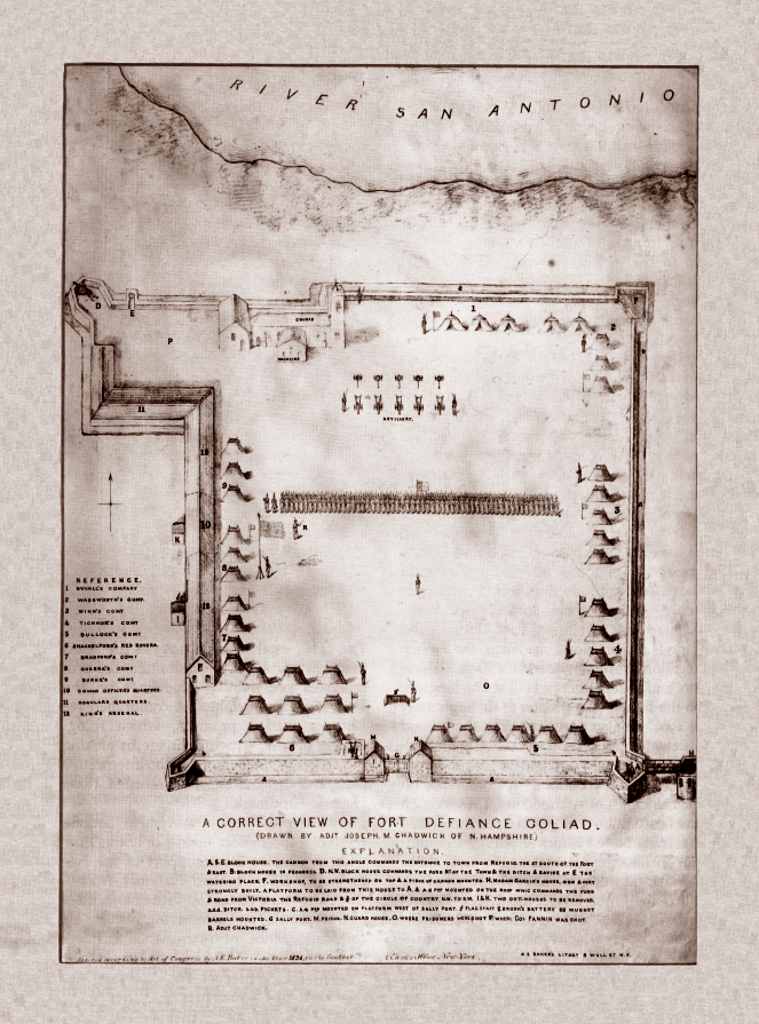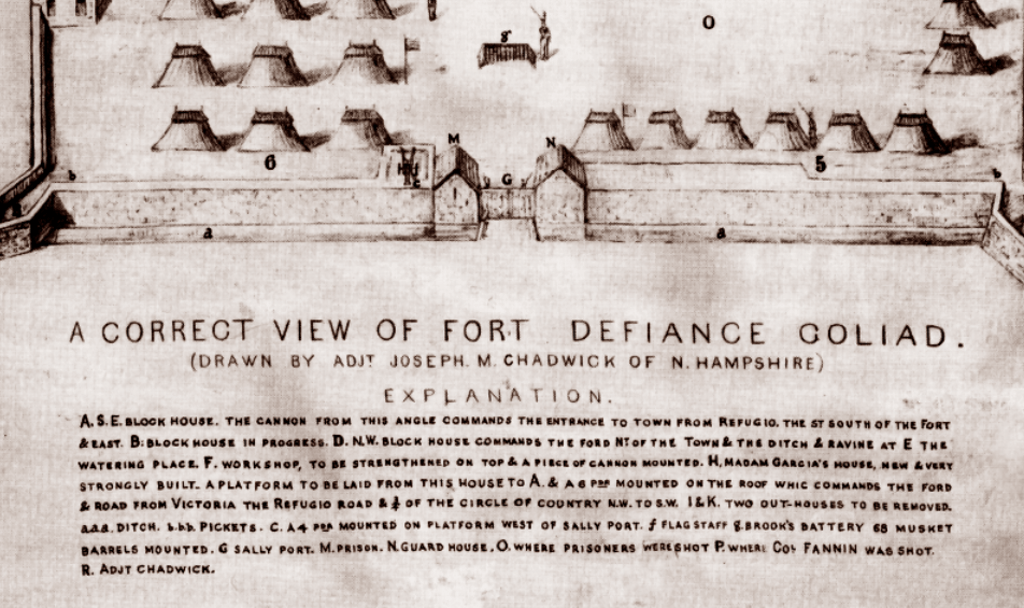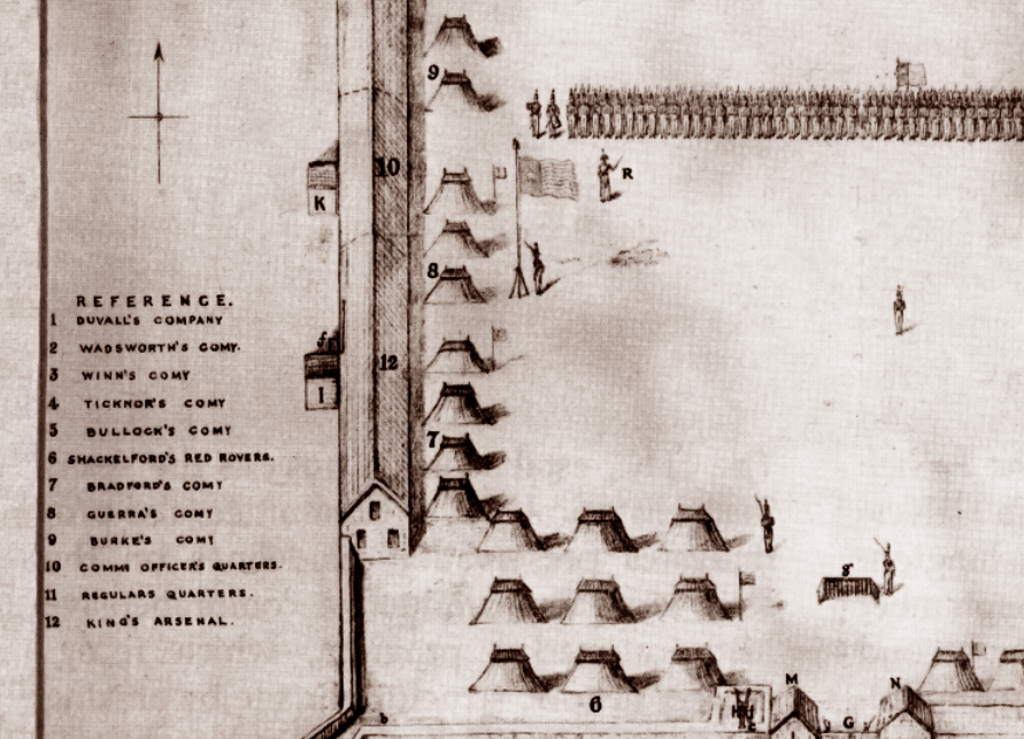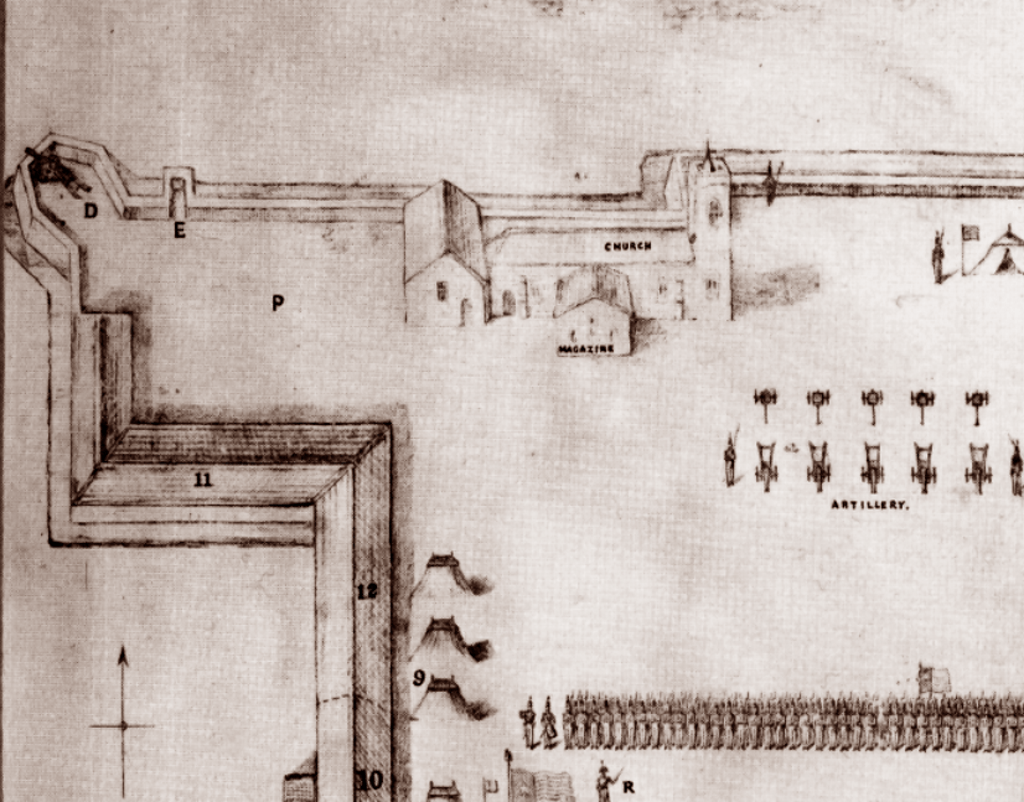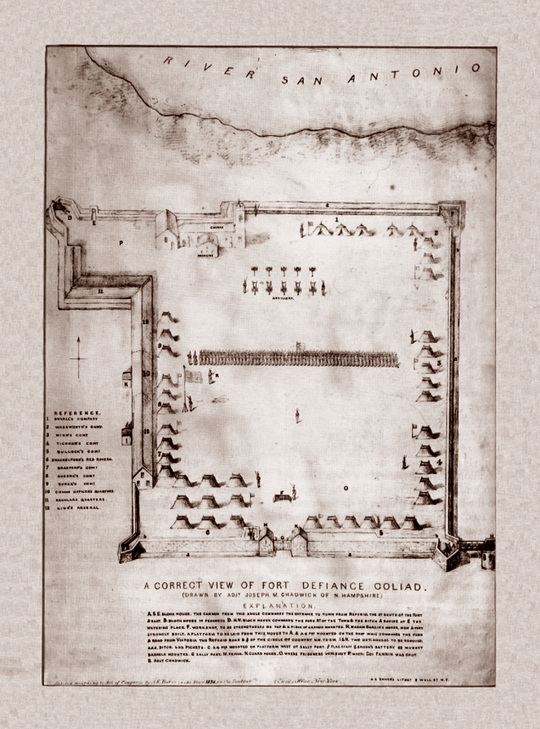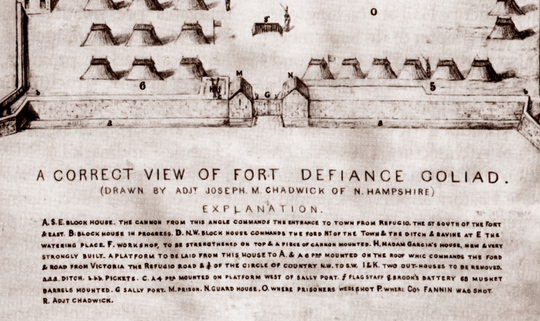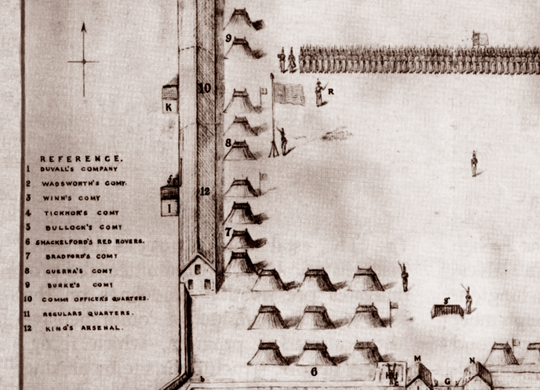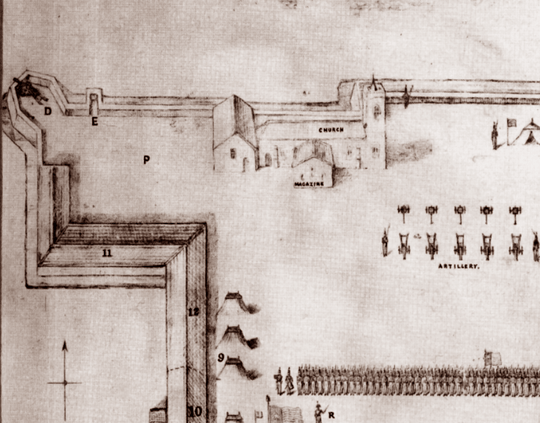Capt. Chadwick's Plan of Presidio La Bahia - Goliad - 1836
Originally Published in 1836
Have a look at Presidio La Bahia, or as it was called during the Texas Revolution, Fort Defiance.
Where did this image of the fort come from?
Captain Joseph M. Chadwick was Colonel Fannin’s adjutant at Goliad. He was trained in topographical engineering at West Point, but like Fannin, withdrew before graduating.
He drew a detailed plan of the fort on March 2, 1836. (He could not have known it at the time, but the Texas Declaration of Independence was signed that same day.) That plan was sent to his mother in New Hampshire shortly before he was killed with almost all of Fannin’s command in the Goliad Massacre that Palm Sunday.
Over the ensuing decades the walls of the fort were scavenged for building materials, until only the church and jagged remnants remained. In 1963, Raiford Stripling (A&M College of Texas, class of 1931), was given the task of restoring the presidio to its 1836 appearance. This was a job he had wanted since the mid 1930s.
But just how did it look in 1836? Fortunately Stripling had been in contact with members of the Chadwick family for decades and they had supplied him with a copy of this print, a lithograph made in New York City in 1836, based on the sketch Captain Chadwick had sent home.
The restoration project was completed in 1967, but Stripling had nagging doubts. How could he be certain the lithograph actually matched Chadwick’s sketch? After all, the lithographer had placed the church’s bell tower on the wrong end.
But providence intervened and laid his doubts to rest. Two weeks before Lady Bird Johnson was scheduled to rededicate the presidio, Captain Chadwick’s original sketch turned up in a Charlottesville, Virginia library. It was a perfect match for the lithograph.
Even the lithographer’s misplacement of the tower was understandable, as Chadwick had only shown the outline of the church in his sketch.
In 2020, the only known copy of the Fort Defiance lithograph went on the auction block at Heritage Galleries in Dallas. The opening bid was $50,000. Seventeen bids later it sold for $200,000.
For the first time, you can own a reproduction. Our fine-art reprint measures 18 by 24 inches. It fits in a standard size frame, and won’t cost your $200,000.
Physical Details
- 18 by 24 inches
- On heavyweight fine-art paper
- As it was in 1836
The paper is acid free, cold press cotton watercolor with an elegant lightly textured finish. This surface allows the inks to 'bite', reproducing the shading and tonality of the original map vividly, beautifully, and exactly.
The inks are guaranteed color-fast for 80 years, which means you won't need to lay out the extra money for UV glass. You can hang your map in direct sun and it will be just as bright when passed on to the next generation it is the day it ships.
It's an instant heirloom. Get yours before they're gone...and get one to give to a friend. He'll owe you!


